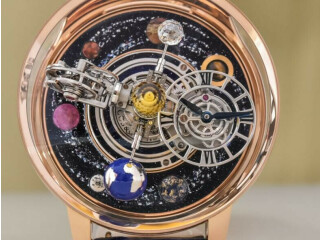Wire Drawing Machines Full-time Job
4 years ago Business Development Samraong 697 viewsJob Details
Wire Drawing Machines
Wire drawing is an important industrial process. Wires are reduced in diameter through a series of die/capstan combinations which provide the desired reduction steps. Typical copper wire drawing machine within BICC Cables Ltd use up to twenty-one dies in one line and it is necessary to optimise the die drafting for each machine and final wire diameter to obtain good machine efficiency and high quality product. An important aspect in the manufacturing process is to avoid wire breakages with the resultant loss of production due to short final lengths and the associated time required to restring the drawing machine. In order to optimise the conditions for each machine and wire size, computer simulations of the process are used to predict performance by estimating factors such as the ratio of drawing stress to ultimate tensile stress, drawing force, back tension and heat generated.
A computer simulation of the multi-line wire drawing process for copper wire has been modelled by the Wrexham Technology Centre of BICC Cables Ltd using a bulk model. The redundant work during the drawing process was included by formulation and equations for the redundant deformation were derived that were in good agreement with published experimental work.
A new computer simulation has been developed to predict the performance of wire drawing process. The model uses a one dimensional explicit finite difference method to determine the plastic deformation in the dies. The redundant work formulation was used as in the previous simulation. This paper describes the numerical methods used and compared the results from the new computer simulation with the previous bulk model. Significant differences are predicted in the stress ratios, drawing force and heat generated for process predictions. The new simulation of the plastic deformation in the dies also indicated optimum semi-die angles away from the traditional eight degrees.
After having reduced the diameter as much as possible by hot rolling (smallest diameter approximately 5.5 mm), smaller diameters must be produced by cold drawing (see Golis et al., 1999; Schruff, 2004). Tension is applied to draw the hot rolled wire in several pulls down to a final required diameter between 1 and 2 mm. Calcium and sodium stearate are usually applied as a drawing lubricant. These soaps are particularly suitable at high drawing speeds because the lubricant film remains intact. Due to friction, temperatures above 150 °C and as high as 400 °C develop, which cannot be reduced by the cooling effect of the lubricant and air alone. Thus the dies are cooled with water and the wire with compressed air. Compared with earlier machines, modern dry wire drawing machines are more efficient with regard to the consumption of cooling water and lubricant as well as the filtration of stearate dust emissions. Dry aluminum wire drawing machine are machines that pull in the forward direction (Ruge and Wohlfahrt, 2001; Schimpke et al., 1977). They pull the wire as many as 14 times, i.e. a series of 14 drawing dies which are usually powered separately using rotational speed regulators. Typical technical data may be found in Table 22.4.
Applications include electric motor drives for conveyors and other material handling equipment such as stacker reclaimers, crushers, haulages, ball mills, cranes, hammer mills, rotary dryers, centrifuges, reciprocating pumps, winches, fans and wire drawing machines.
In view of their easy adaptability, they are manufactured in standard sizes suitable for common types of load applications. They are therefore available on short deliveries, in smaller ranges, say, from 1 kW to 200 kW. They can be selected for the required service conditions, as a motor is selected to suit a particular load requirement from the available sizes of couplings.
2 Variable-filling or scoop control-type couplings (variable-speed couplings) (Figure 8.7)
Through such couplings the output speed of the runner can be changed by varying the volume of oil in the working circuit through the scoop operating lever, as shown in Figure 8.7(b). When the oil volume is full, slip is at minimum and the output speed is maximum. As the oil circuit is emptied, the slip gradually increases. A constant-speed motor can thus be used to provide a stepless variable-speed drive. Speed variation is possible up to 15–20% of Nr for centrifugal loads such as fans and pumps.


